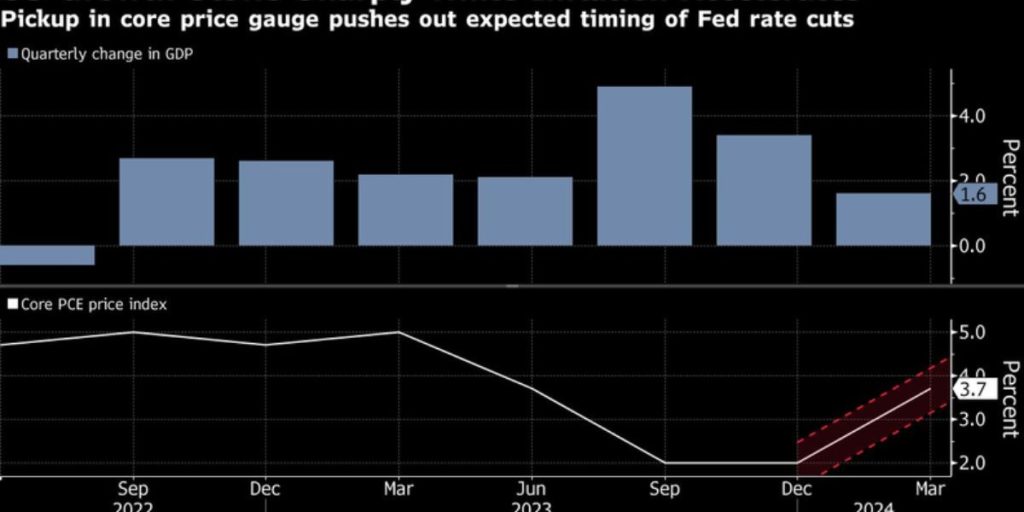A Commerce Department report released on Thursday gave a double dose of negative economic data, revealing that overall economic growth slowed more than expected in the first quarter of the year while inflation increased unexpectedly.
According to the Bureau of Economic Analysis’s “advance” estimate, real GDP increased at an annual rate of 1.6% in the first quarter of 2024, down from 3.4% in the fourth quarter of 2023.
Along with the first quarter GDP measure, which fell far short of the 2.4% most economists expected, the personal consumption expenditures price index grew 3.4% during the time, compared to a 1.8% gain in the fourth quarter of 2023. Excluding food and energy prices, the PCE price index climbed 3.7% in the first three months of 2024, compared to 2% at the end of last year.
“This was a worst of both worlds report — slower than expected growth, higher than expected inflation,” David Donabedian, chief investment officer of CIBC Private Wealth US, told CNBC. “We’re not far from having all rate cuts reversed from investor expectations.” It requires (Fed Chair Jerome) Powell to strike a hawkish tone at next week’s (Federal Open Market Committee) meeting.”
According to BEA analysts, nominal real GDP growth was driven mostly by increases in consumer expenditure, residential and nonresidential fixed investment, and state and local government spending.
The increase in consumer spending was driven by higher expenditures on services rather than commodities, particularly on health care, financial services, and insurance, according to the report.
The Fed began the year by indicating that 2024 would see a series of downward adjustments to its federal funds rate, but Powell said earlier this month that persistent inflation and other muted economic indicators could delay any decisions to cut the benchmark rate, which remains in the 5.25% to 5.5% range, the highest in more than 20 years.

“Recent data have clearly not given us greater confidence” that inflation is coming under control, but “instead indicate that it’s likely to take longer than expected to achieve that confidence,” Powell said during a panel discussion at the Wilson Center, according to The Associated Press.
“If higher inflation does persist,” he went on to say, “we can maintain the current level of (interest rates) for as long as needed.”
Expecting the worst.
Utahns expressed collective pessimism earlier this year about the economy’s future course in 2024.
When asked, “Looking ahead, how are you feeling about the economy in the coming year?” in a statewide poll conducted in late January by the Deseret News in partnership with the Hinckley Institute of Politics, 52% said they were somewhat or very pessimistic, 43% said they were somewhat or very optimistic, and 6% said they didn’t know.
In a follow-up question asking survey participants how concerned they were about inflation right now, 87% said they were somewhat or very concerned, 11% said they were not very or not at all concerned, and 2% were unsure.
Republican survey participants were less enthusiastic than Democrats about the economy’s prospects for the future year, 39% to 54%, and more concerned about inflation, 89% to 77%.
In the poll, those with lower salaries were more pessimistic about the economy than those with higher incomes. Younger residents indicated more pessimism than elder residents.